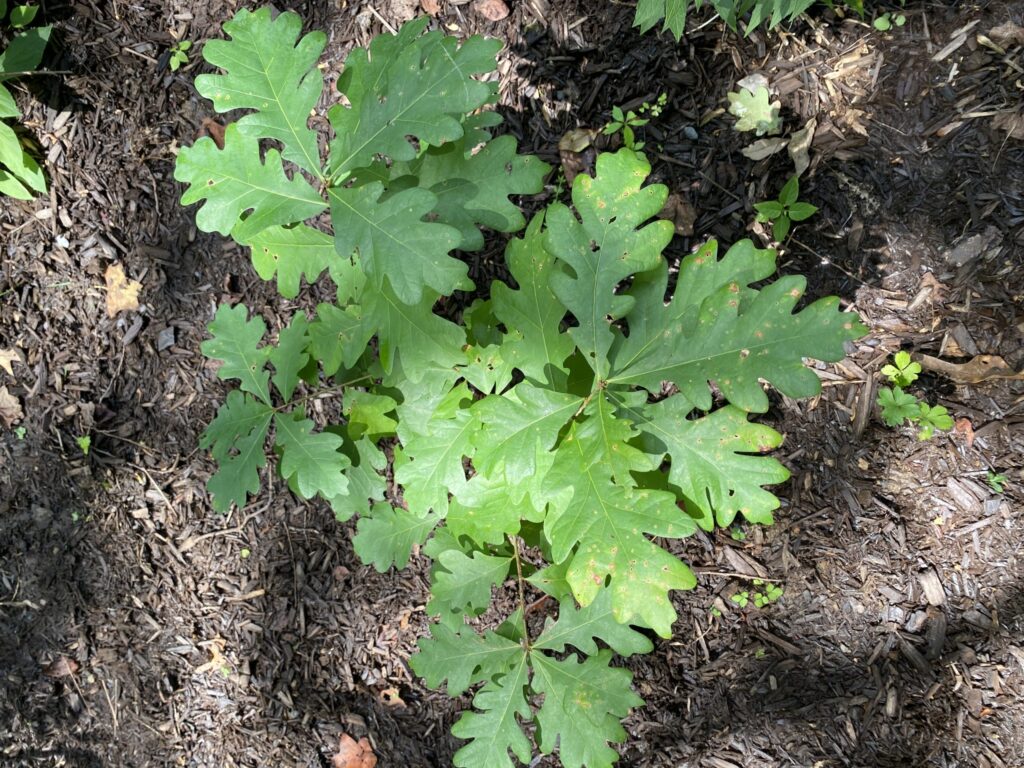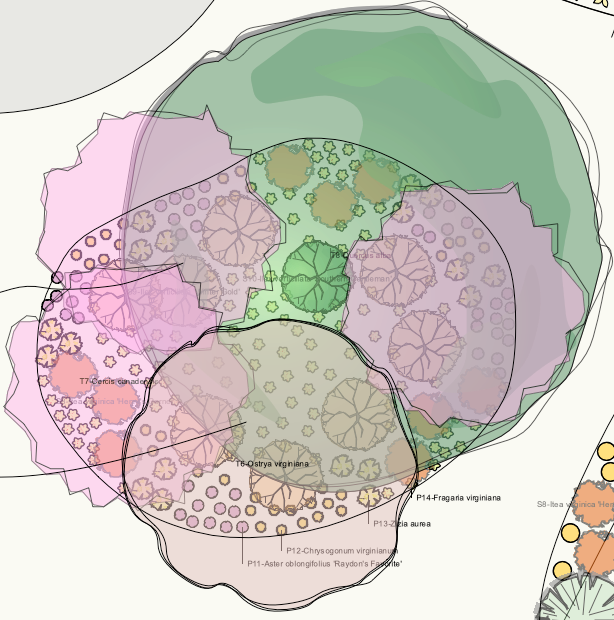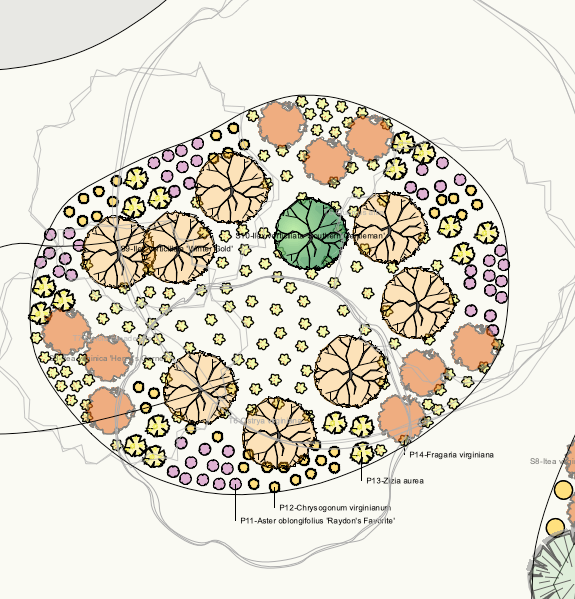How ‘Soft Landings’ Help Wildlife Thrive
Our gardens offer so many great ways to support wildlife—just by choosing plants that provide food, shelter, and places to nest. Pollinator gardens and meadows are popular options to attract wildlife, but a layered landscape offers a more diverse habitat. This layered landscape is sometimes referred to as a “soft landing,” a plant-filled area beneath trees where plants and animals interact. This intentional underplanting provides shelter, supports the lifecycle of insects and other creatures, and creates a thriving mini-ecosystem. In contrast, a frequent sighting in our communities is a solitary tree surrounded by mulch — which provides few benefits for wildlife. (The insect expert, Heather Holm, details soft landings in this blog post.)
A recent design I created to transform a large lawn into a wildlife habitat centers around a white oak (Quercus alba). This specimen tree — a keystone species — forms the foundation of a layered landscape. The white oak alone supports hundreds of moth and butterfly species as well as birds, mammals, reptiles, amphibians, and even fungi and lichen. The understory trees are Eastern redbud (Cercis canadensis) for a splash of color in early spring and American hophornbeam (Ostrya virginiana) for its hop-like fruit and shaggy bark, which provides winter interest. The shrub layer consists of Sweetspire (Itea virginica) for its early blooms and brilliant red fall foliage, and Winterberry (Ilex verticillata), which doesn’t have showy flowers but has bright red berries in the fall — an important food source for migrating birds. The ground layer has early and late-blooming plants for interest and wildlife value. A crucial layer that isn’t discussed often is the duff, or decomposing organic material that is found on the forest floor and is necessary for soil health. That is why it’s important to leave the leaves instead of raking or blowing them. This design will take many years before it’s fully mature, but it will evolve and grow with each season.
Here are the plants in this design:
- White oak (Quercus alba) – specimen tree
- Eastern redbud (Cercis canadensis)
- American hophornbeam (Ostrya virginiana)
- Winterberry ‘Southern Gentleman’ (Ilex verticillata ‘Southern Gentleman’)
- Winterberry ‘Winter Gold’ (Ilex verticillata ‘Winter Gold’)
- Sweetspire ‘Henry’s Garnet‘ (Itea virginica ‘Henry’s Garnet’)
- Aromatic aster ‘Raydon’s Favorite’ (Symphyotrichum oblongifolium ‘Raydon’s Favorite’
- Green-and-gold (Chrysogonum virginianum)
- Wild strawberry (Fragaria virginiana)
- Golden Alexander (Zizia aurea)
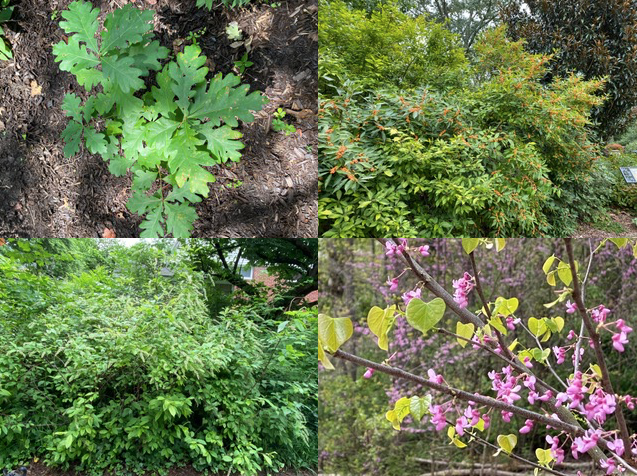
Trees and shrubs in the design Soft landing is not a term that is familiar to everyone, but it’s a wonderful way to describe how plants and animals are interdependent. If you are fortunate enough to stumble upon an area that has not been disturbed by human activity, you’ll see how nature provides its own soft landing.
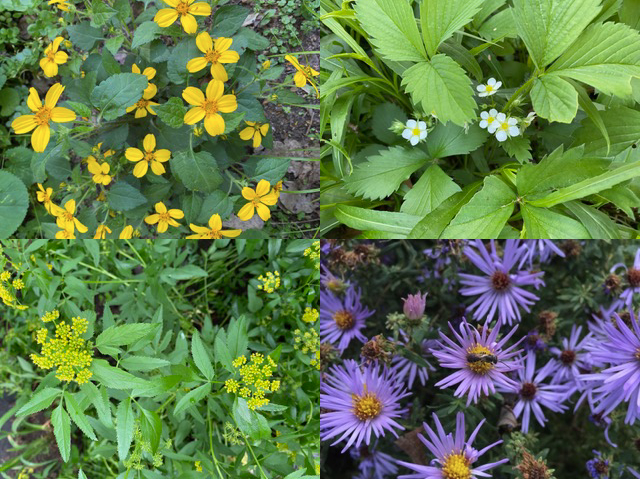
Perennials in the design Sources:
Soft Landings by Heather Holm
Creating Wildlife Habitat from the Northern Virginia Bird Alliance
The Nature of Oaks by Douglas Tallamy
